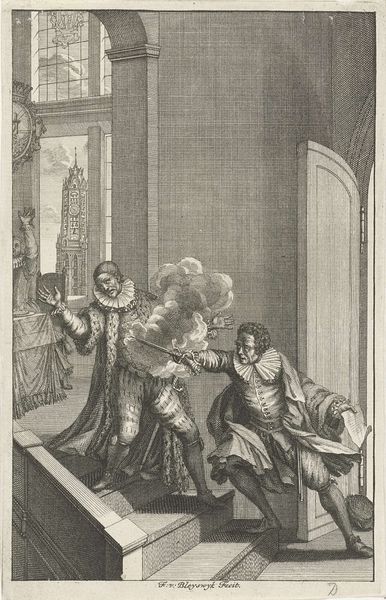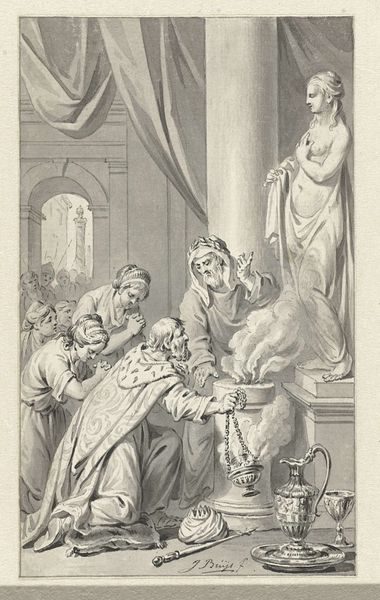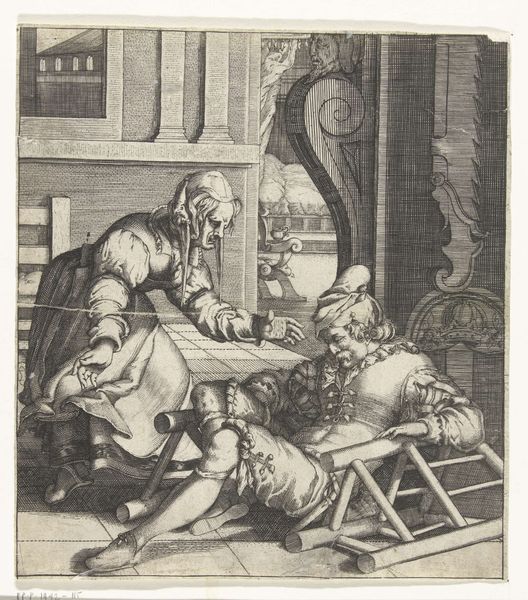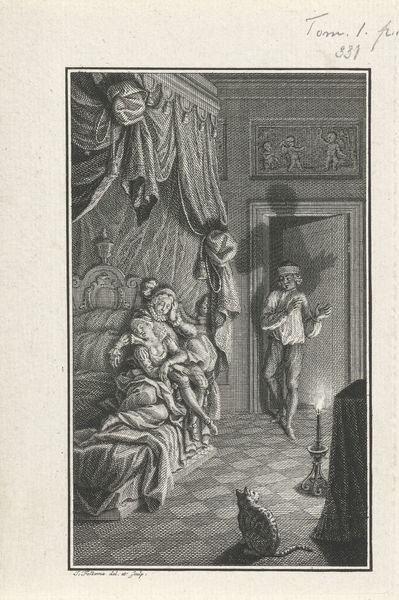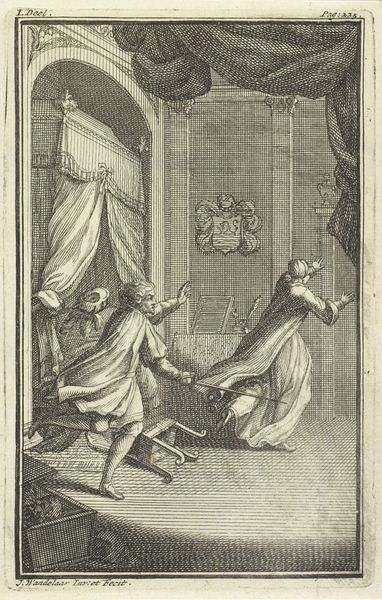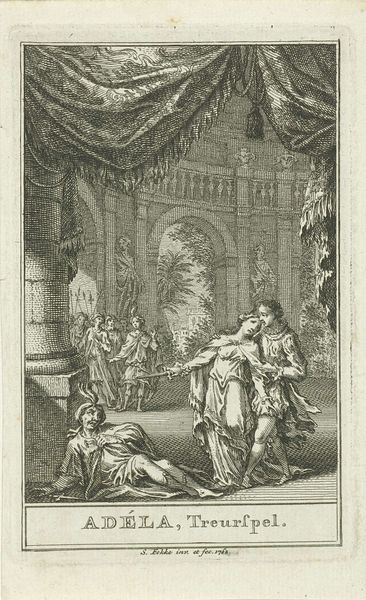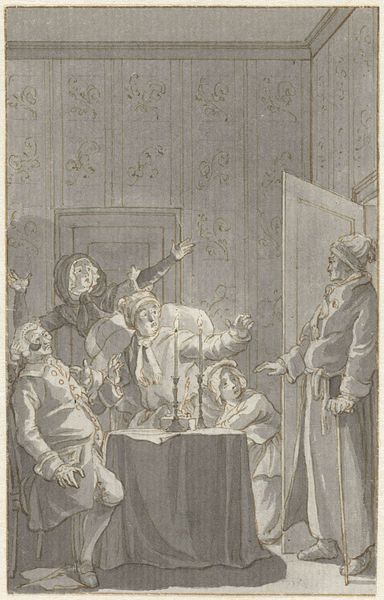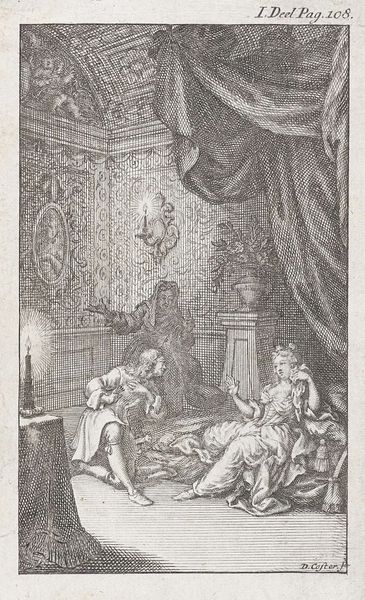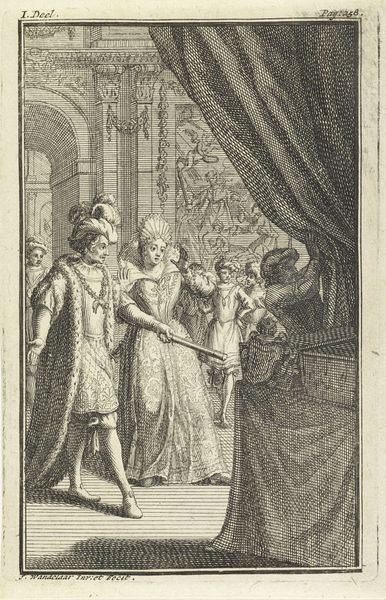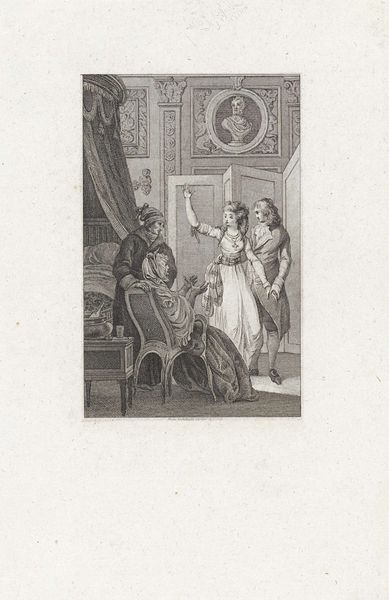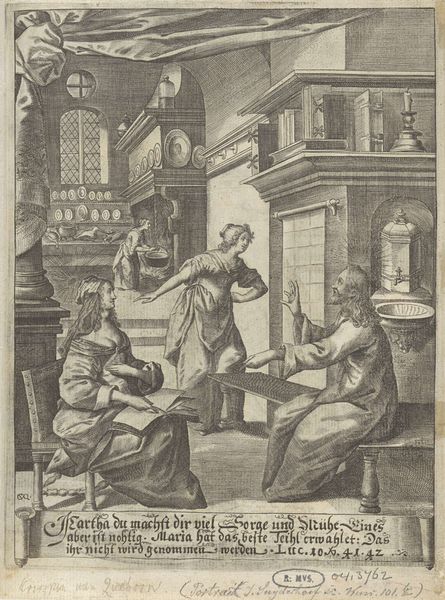
print, engraving
#
narrative-art
#
baroque
# print
#
figuration
#
line
#
history-painting
#
engraving
Dimensions: height 174 mm, width 109 mm
Copyright: Rijks Museum: Open Domain
Curator: What a dramatic scene captured in this print, an engraving dating sometime between 1681 and 1746, and part of the Rijksmuseum collection. It depicts "The Murder of William of Orange, 1584." Editor: My first impression is just how much chaos the artist manages to convey with such fine lines! There's a tangible sense of violence, even though it's rendered in this quite elegant, Baroque style. Curator: The image highlights a pivotal moment in Dutch history. William of Orange, a key figure in the Dutch Revolt, was assassinated in Delft. The print underscores the profound political implications of this act, forever impacting the emerging Dutch Republic. The setting, inside his home, brings it close to daily life. Editor: The smoke from the pistol creates an interesting focal point. It is an ephemeral yet arresting symbol, of violence and transience, hanging in the air between the victim and the aggressor. Smoke has so many symbolic uses that seem right here, signifying disruption and even obfuscation of the truth. It really underscores the idea of betrayal. Curator: Exactly. What's fascinating, too, is the idealization despite the brutal nature of the event. The artist seems to present William almost martyred, connecting his death to the broader narrative of Dutch independence, which was certainly politically expedient. And note how even in this small-scale print, there's this real attempt to depict the architecture as very grand, contributing to a sense of gravitas and a kind of visual vocabulary that signaled importance. Editor: And I notice that the perspective emphasizes both the horror and what comes after. While William falls, our eye travels upwards towards a window looking out to the tower and sky. There is the sense of a soul’s flight heavenward but, given his legacy, it speaks to the enduring ideas that outlive any one person. It creates continuity out of chaos. Curator: It’s true, looking at it this way we see not just death but transformation, especially of the public memory around Willem's life. Editor: Definitely. It's remarkable how potent a single image can be, encapsulating so much cultural and symbolic weight. Curator: Indeed, it reminds us of the enduring power art has to shape our understanding of history and identity.
Comments
No comments
Be the first to comment and join the conversation on the ultimate creative platform.
